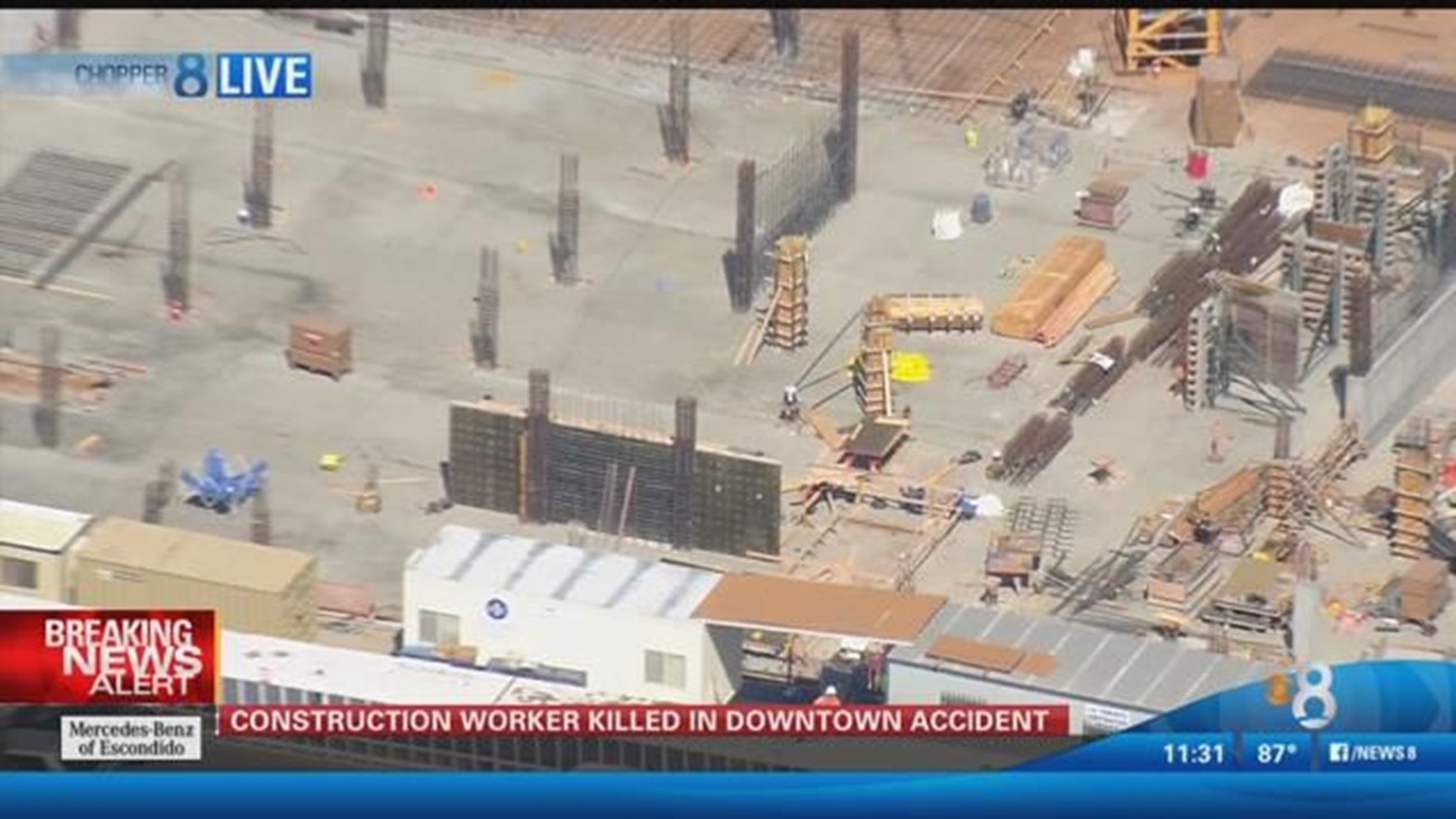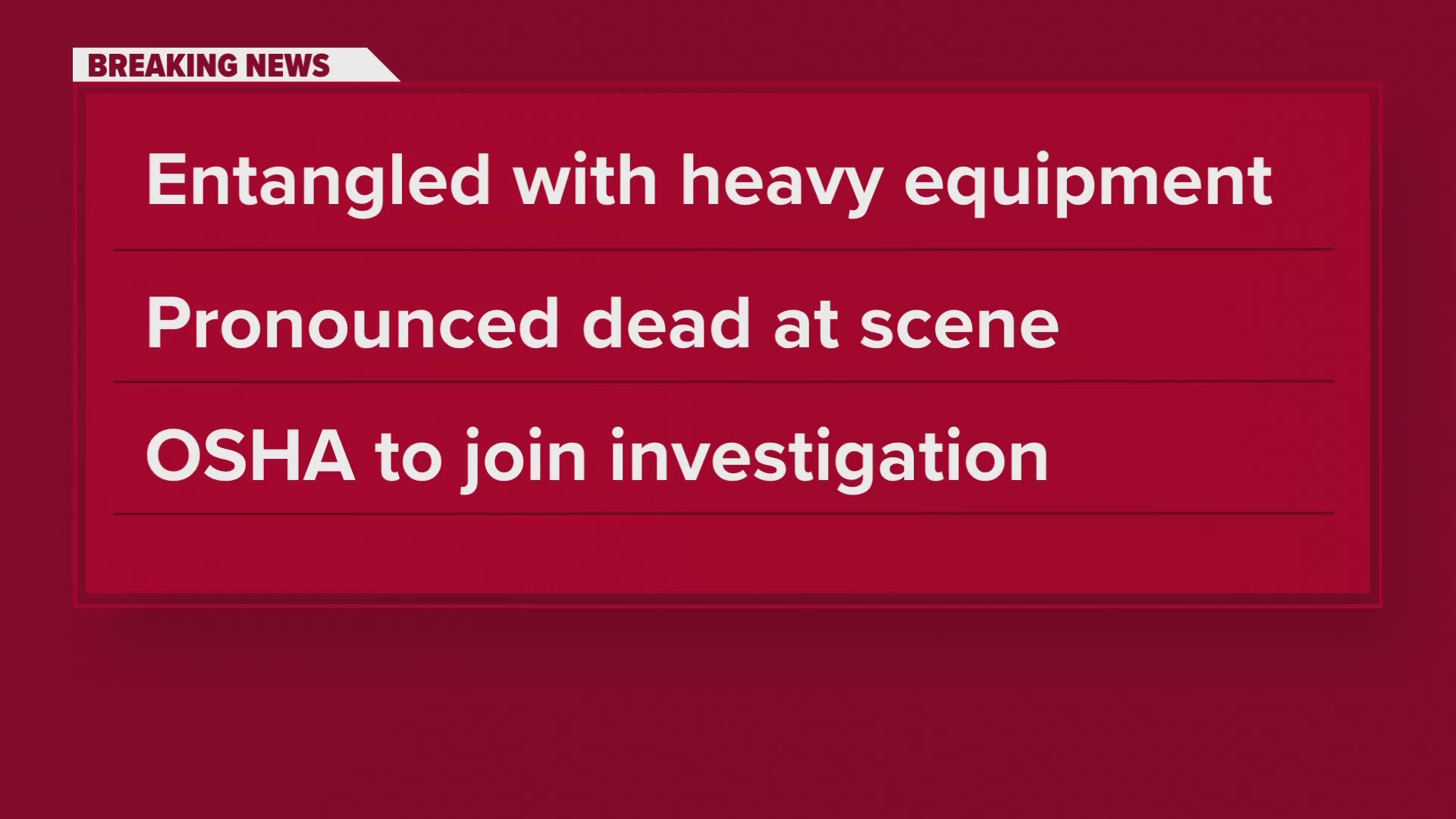It's a story we don't want to hear, but one that demands our attention. Worker killed in construction accident—it's not just a headline; it's a harsh reality that happens more often than we'd like to admit. Every time we scroll past these news updates, we might think it's just another number, another statistic. But behind every report is a person with dreams, a family waiting at home, and a life cut tragically short.
Construction sites are supposed to be places where dreams take shape—buildings rise from the ground, roads connect communities, and infrastructure shapes our future. But beneath all that progress lies a darker side, where safety can sometimes take a backseat. Today, we're diving deep into the realities of what happens when things go wrong on construction sites and how we can prevent such tragedies from happening again.
This isn't just about numbers or regulations—it's about lives. It's about understanding why these accidents happen, learning from them, and most importantly, taking action so no family has to receive that devastating phone call. So grab a seat, take a deep breath, and let's explore this topic together because knowledge truly is power.
- Kevin Augustiniak The Rising Star In The World Of Entertainment
- Peanuts Characters Zodiac Signs Discover The Cosmic Connection Of Your Favorite Peanuts
Understanding the Scale: How Often Does This Happen?
Before we dive into the nitty-gritty details, let's talk numbers. According to OSHA (Occupational Safety and Health Administration), construction ranks among the most dangerous industries in the U.S. In 2021 alone, there were over 1,000 fatal injuries reported in the construction sector. That's like losing an entire small town's population every year. And guess what? Falls, struck-by incidents, electrocutions, and caught-in/between hazards account for the majority of these deaths.
But here's the kicker: most of these accidents are preventable. Yes, you heard that right. Preventable. If proper safety measures were in place and followed religiously, many workers wouldn't have to lose their lives on the job. So why does it keep happening? Let's break it down in the next section.
Causes Behind the Tragedy: What Goes Wrong?
Alright, let's get real for a second. Construction accidents don't just happen out of nowhere. There's always a reason—and often, it's not just one thing. Here are some common causes behind worker fatalities in construction:
- Lindsay Lohan Wedding Ring The Glamorous Journey Of Love And Commitment
- Saturn Direct In Pisces A Cosmic Shift Thatrsquos Got Everyone Talking
- Poor Training: Workers aren't adequately trained on how to use equipment safely or recognize potential hazards.
- Equipment Malfunctions: Machines break down, tools fail, and safety gear doesn't work when it needs to most.
- Inadequate Supervision: Site supervisors might be overwhelmed or underqualified to ensure everyone follows safety protocols.
- Hazardous Environments: Unsafe working conditions, like unstable scaffolding or improper trenching, set the stage for disaster.
These issues aren't new, but they continue to plague the industry. It's time we stop pointing fingers and start addressing the root causes head-on.
Who Are the Victims? Faces Behind the Numbers
Every worker killed in a construction accident has a name, a story, and a family. They're not just statistics—they're real people who leave behind loved ones trying to pick up the pieces. Imagine being a spouse, child, or parent receiving that call. It's gut-wrenching.
Real-Life Stories: Putting a Face to the Tragedy
Meet John Doe, a father of three who worked as a crane operator. One day, while lifting heavy materials, the crane's cable snapped due to lack of maintenance. John was struck by falling debris and didn't survive. His kids now grow up without their dad, and his wife struggles to make ends meet.
Or consider Maria Rodriguez, a welder with over 20 years of experience. She fell from a faulty ladder during a routine inspection. Safety harnesses were available, but she wasn't trained on how to use them properly. Her coworkers lost a mentor, and her community lost a pillar.
These stories aren't isolated incidents—they're reminders of the human cost of negligence. Let's honor their memories by making sure no one else suffers the same fate.
Prevention Is Key: What Can Be Done?
Here's the good news: we can prevent worker fatalities in construction accidents. It starts with implementing stricter safety standards and ensuring everyone—from management to laborers—takes responsibility for maintaining a safe work environment. Here's a quick breakdown:
- Regular equipment inspections and maintenance
- Mandatory safety training for all employees
- Clear communication channels for reporting hazards
- Enforcement of personal protective equipment (PPE) usage
It's not rocket science, folks. We just need to prioritize safety over profit and hold everyone accountable. Simple, right? Well, maybe not so simple in practice, but definitely doable.
Legal Implications: Who's Liable When Things Go Wrong?
When a worker is killed in a construction accident, legal questions inevitably arise. Who's at fault? Can the family sue for wrongful death? What about workers' compensation? These are valid concerns, and the answers depend on several factors:
- The specific circumstances of the accident
- Whether safety regulations were violated
- The level of negligence involved
Legal action can provide some form of closure and financial relief for grieving families, but nothing can bring back the person they lost. That's why prevention should always come first.
Technology's Role: Innovations in Safety
Thankfully, technology is stepping up to help reduce construction accidents. From drones monitoring site conditions to wearable tech tracking worker health, innovation is making a difference. Here are some game-changers:
Smart Helmets and Vests
Equipped with sensors and GPS, these devices alert workers to potential dangers in real time. They can even notify supervisors if someone falls or becomes unresponsive.
Augmented Reality Training
Instead of relying on outdated manuals, workers can now practice using equipment in a virtual environment. This hands-on approach improves learning retention and boosts confidence.
While tech can't replace human vigilance, it certainly enhances it. Let's embrace these advancements and integrate them into everyday practices.
The Human Factor: Building a Culture of Safety
At the end of the day, technology and regulations only go so far. The real change happens when everyone buys into a culture of safety. This means:
- Encouraging open communication about risks
- Rewarding safe behaviors instead of punishing mistakes
- Making safety a core value, not just an afterthought
It's not about pointing fingers or assigning blame—it's about working together to create a safer workplace for everyone. Remember, safety isn't just a policy; it's a promise to our coworkers, friends, and family members.
Global Perspective: Lessons from Other Countries
Construction safety isn't just an American issue—it's a global challenge. Some countries are leading the way in reducing worker fatalities through innovative strategies. For example:
- Sweden focuses on preventive design, ensuring safety is built into projects from the start.
- Singapore uses a zero-tolerance policy for violations, with heavy fines and penalties for non-compliance.
By studying what works elsewhere, we can adapt best practices to fit our own needs. Collaboration across borders can lead to better outcomes for everyone involved.
Looking Ahead: A Safer Future
We've covered a lot of ground today, from understanding the causes of construction accidents to exploring solutions that can save lives. But the journey doesn't end here. It's up to each of us—whether we're employers, employees, or advocates—to keep pushing for change.
What You Can Do
Here are a few actionable steps you can take:
- Advocate for stronger safety regulations
- Support organizations working to improve workplace conditions
- Share this article to raise awareness
Together, we can make construction sites safer places to work. Every life matters, and every worker deserves to return home safely at the end of the day.
Conclusion: Let's Honor Their Memories
Worker killed in construction accident—it's a phrase we never want to read again. But until we take meaningful action, it will continue to haunt the headlines. Let's honor those we've lost by committing to a safer future. Remember, safety isn't optional—it's essential.
So, what's next? Take a moment to reflect on what you've learned today. Share your thoughts in the comments below or reach out to us with your own stories. Together, we can create a world where no family has to receive that dreaded phone call.
Table of Contents
- Understanding the Scale: How Often Does This Happen?
- Causes Behind the Tragedy: What Goes Wrong?
- Who Are the Victims? Faces Behind the Numbers
- Prevention Is Key: What Can Be Done?
- Legal Implications: Who's Liable When Things Go Wrong?
- Technology's Role: Innovations in Safety
- The Human Factor: Building a Culture of Safety
- Global Perspective: Lessons from Other Countries
- Looking Ahead: A Safer Future
- Conclusion: Let's Honor Their Memories
- Nicole Simpson Abuse Photos The Truth The Impact And What You Need To Know
- Lindsay Lohan Wedding Ring The Glamorous Journey Of Love And Commitment


